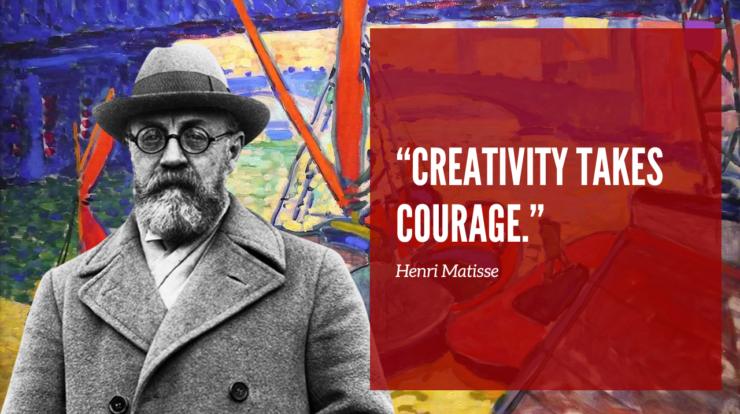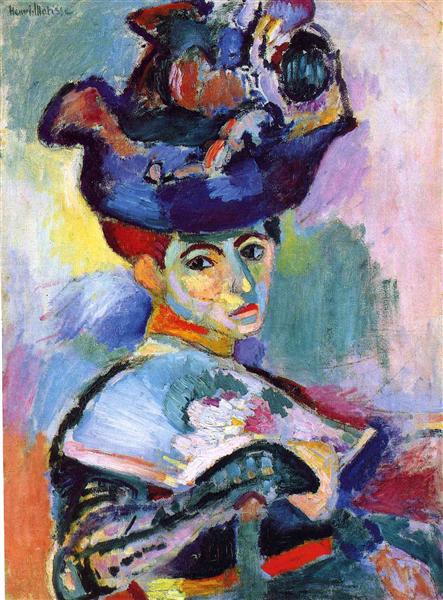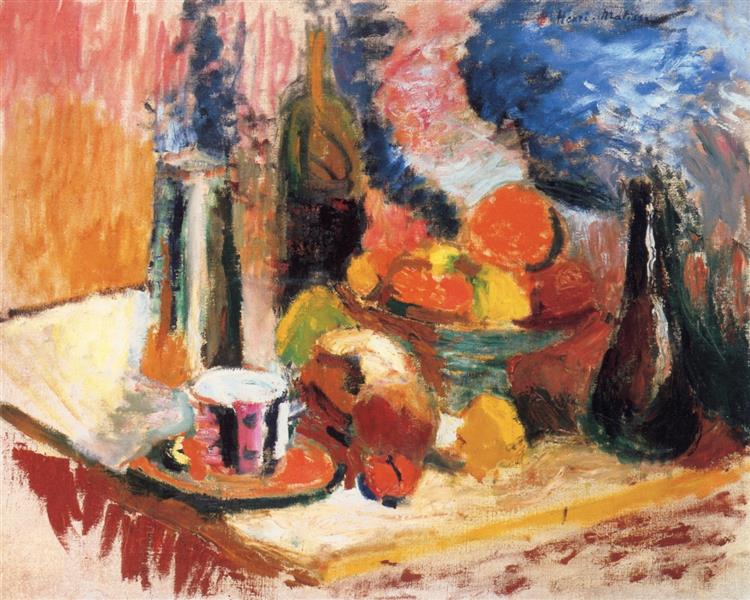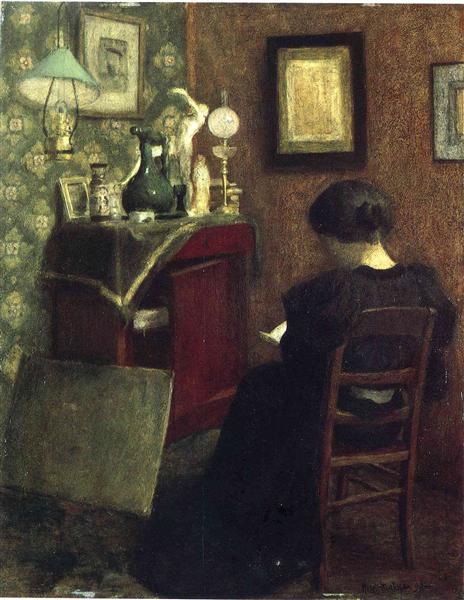
“Creativity takes courage.” Henri Matisse
Henri Matisse was born on December 31, 1869, in the small town of Le Cateau-Cambrésis in northern France. His father was a grain merchant, and his mother was a devout Catholic. From an early age, Henri showed a great interest in art, and he began to study painting in 1891. In 1892, he moved to Paris to study at the Académie Julian, where he met and befriended the artists Pablo Picasso and Georges Braque.
Matisse’s early work was strongly influenced by the Impressionists, as well as by Paul Cézanne and Gauguin. Over time, he developed his unique style, characterized by bold colors and simple, fluid shapes. In 1905, he held his first solo exhibition at the Salon d’Automne, where his work caused a sensation among the public and critics alike.
Matisse’s work was unique in its use of color and shape. His paintings are instantly recognizable, and his style is often imitated but never duplicated.
Critics have said that Matisse was one of the most important artists of the 20th century. His work was revolutionary, and he had a profound impact on the development of modern art.
Matisse continued to experiment with his art throughout his life. He died on November 3, 1954, in Nice, France.



Love Matisse?
What are your thoughts on Henri Matisse and his work? What are some of your favorite Matisse paintings? What do you think makes Matisse’s work so unique and special? What do you think Matisse’s work can teach us about art and life? Leave your thoughts in the comments below.
This is not a comment on Matisse per se, but on creativity in general.
Whether or not people follow us and we become leaders, as Matisse did, doing anything out of the box, on whatever scale or significance, takes either courage, ignorance, or both. I face that in the sculpture studio every time I try something I haven’t tried before, whether or not anyone has done it before me. It was also true for me in science, and was particularly interesting to observe in my graduate students. They always struggled to decide how large their leaps should be. They often began with very grand, unachievable notions of what they would accomplish, shrank back to something too small and inconsequential, then gathered courage to begin stepping farther out into the unknown again.
What a thrill it was to observe in others, and what a thrill it is to experience in the studio. Art is a dangerous undertaking, and I love it!
Thank you for your insightful comment Lee! It’s always interesting to hear different perspectives on creativity and the process of making art. I think you’re right that it takes a certain amount of courage to step out into the unknown and try something new, whether or not anyone has done it before. It’s also exciting to see what can be accomplished when we push ourselves to explore and experiment.
I relish the notion that it takes courage to be creative. I think that’s why people are attracted to artists to understand where ideas come from and how you transform them into a painting or sculpture. On several occasions someone’s suggestion results in a piece, and that’s a good story to tell.
Love the Truth in this.
3rd Generation Artist 🎨
This is a Great post
From my article: Digital Fine Art Primer | Digital Art vs Traditional Art
https://www.edensart.com/digital-fine-art-primer
To further illustrate the point: Henri Matisse is often regarded as the most important French painter of the 20th century. In his late sixties, as ill health had prevented him from painting, he began cutting pre-painted sheets of paper into shapes of varying colors and sizes, arranging them into lively compositions. Matisse had invented a new medium, and scissors his chief implement.
Great article Eden!
Favorite quote from Matisse: ““When I put down a green, it doesn‘t mean grass; and when I put down a blue, it doesn’t mean the sky.” One short sentence and one of the most meaningful in his art.
His paintings always evoke emotion – sometimes toward the figures and sometimes from your response to his created atmosphere.
Thanks for the Share! He may have passed away, but he is timeless…
Absolutely!
I believe that Matisses’ work teaches us that strong shapes, vibrant color and strong contrast cause a painting to demand attention. And why not make the painting the center of attention and the focal point in a room? Soft, subtle work can be beautiful, but often it is exciting to be smitten by a strong painting and consequently remember it well.
Exactly Jill!
I think I have been the luckiest of artists. I’ve managed to gain a bit of insight from every artists I’ve “spent time with” historically.
My time with Matisse was all about pure exuberance. (look no further than “woman with Hat” and the brush stroke defining the nose). I wanted to do that but just couldn’t make it work. After awhile, I noticed that his painting was first and foremost about paint. The subject was almost incidental.
And then, I understood his exuberance and found mine.
“In the end, there is only Matisse.”
Pablo Picasso
You got me curious about Matisse’s point of view on Creativity and I came across another quote of his that explains further his thought:
“You must forget all your theories, all your ideas before the subject. What part of these is really your own will be expressed in your expression of the emotion awakened in you by the subject.”
I read this as an encouragement to not impose ourselves barriers when painting a subject. An encouragement to give that subject our own interpretation, to express our imagination, to illustrate the emotions felt about the subject. It takes courage to move away from the safer reality and integrate our onlyness into it. But it is so worth it: it’s not reproducing, it’s creating.
I LOVE Mattise. his work is amazing I would like to see as an above quote said letting the paint be important.
also letting the painting command the room I love that the bold colors.
Me too!
Matisse has been my muse for many years. His love of color, strong shapes and disregard for perspective inspires me every time I pick up a paintbrush!
Matisse is one of my favorite artists. His stunning paintings “Dance” and “Music” from the Hermitage make an indelible impression. I saw his work in the original as a college student, his work destroyed all my ideas about the “correct” painting!
Mattise has been one of my inspiration for creating my portraits, but instead of using oils, acrylic etc, I create my paintings using only colorful glass pieces that I make first plus crushed glass then fuse them many times in a kiln. I never know the final results until I open the kiln.
Matisse and fusing – what a great combination!
My favorite Matisse quote: “I don’t paint things. I only paint the difference between things”
In response to Mr Gass’s comment that creativity takes courage, is without doubt. Anyone that stands up to an empty space on a perpetual basis and fills that void with their own individual brand of energy has manufactured a courageous lifestyle.
As far as ignorance playing a part in the creative process I think of it more as an abandonment; an abandonment of the norms of society that pressure individuals to be less than creative; an abandonment of what anyone might think about your creative ambition; an abandonment of knowing the enormous amount of great work by great artists of the past and present; an abandonment of wether you will ever be recognized; an abandonment of frivolous distractions.
And finally to the point that creativity is a dangerous undertaking – you bet it is – and that brings us back full circle to courage.